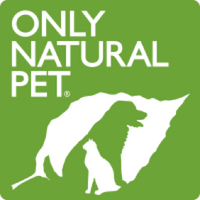Dog Dry Eye Home Supplements
Written by: Dr. Jean Hofve, Holistic Veterinarian, DVM
What is Dry Eye in Dogs?
A healthy tear film can be important to keep your dog’s cornea healthy. Tears supply the cornea with oxygen and nutrients, therefore if the cornea is deprived of oxygen and nutrients, destructive changes may occur, leading to a condition called dry eye. The cornea can become pigmented, scarred and ulcerated, and vision loss can also result without proper management.
Your dog’s dry eyes sting and burn all the time, just like for humans. After an extended period of dryness, the surface of the eye begins to accumulate dark scar tissue and blood vessels, even to the point of blindness in some dogs.
Signs of dry eye in dogs may includes:
- Heavy mucus production
- Redness
- Rubbing at eyes
- Cloudy eyes
- Corneal ulcers
- General lethargy
- Tear staining
Canine Dry Eye Syndrome, also known as Keratoconjunctivitis Sicca (KCS), results from the inability of your dog to produce healthy tears. The cause of your dog’s dry eye can include:
- Nutritional deficiencies
- Systemic inflammation
- Congenital disorders
- Infections
- Taking Sulfa-based antibiotics
- Thyroid Disease
- Immune system malfunction
- Surgical removal of the gland of the 3rd eyelid in Cherry Eye cases.
Although all breeds can suffer from dry eyes, the disease is most commonly seen in Cocker Spaniels, Shih Tzus, Bichon Frises, Lhasa Apsos, Bulldogs, Schnauzers, and Terriers.
How Do Dog's Tears Work?
Mucin Base Layer
The sticky layer closest to the surface of the eye is produced by ocular surface goblet cell mucins and lacrimal gland mucins.
Aqueous Layer
The layer between the mucin and lipid layers is secreted by the lacrimal gland and the canine nictitans gland. It incorporates all water-soluble components of your dogs tear film including nutrients and oxygen.
Lipid Layer
Think oil on water! The outermost layer is produced by the meibomian glands in your dog’s eyelids. It retards tear evaporation, thereby allowing the first two layers of the tear film to adhere to the surface of your dog’s eye. Tear staining is most often associated with biochemical disruption of the lipid layer of the tear film.
How to Support Dry Eye in Dogs Naturally
Vitamins & Minerals
Natural vitamins for dogs, including Vitamins A, C, B-6, and the mineral magnesium. These are nutritional co-factors required for all fatty acid enzymatic metabolism. Plus, Vitamin A supports healthy goblet cell / lacrimal gland mucin production for the base layer of the tear film, which helps maintain normal eye function and health.
Omega 6 Fatty Acid
Black currant Seed Oil as a source of Omega-6 Essential Fatty Acids. This is the most biologically stable source of vegetable-based Omega 6 fatty acid and can help support eye function by aiding in to the production of the aqueous, or water, layer of the tear film.
Omega 3 Fatty Acid
Fish oil as a source of Omega-3 fatty acids for dogs. Both eicosapentaenoic acid (EPA) and docosahexaenoic acid (DHA) are important fatty acids in the production of the lipid top layer of the tear film. EPA also plays an important role in supporting a normal inflammation response, given that systemic inflammation is frequently associated with dog dry eye.
Protein
Specifically apo-lactoferrin, an iron-binding protein. Lactoferrin supports the overall healthy of your dog's eyes.
Curcumin
Curcumin naturally supports a healthy inflammation response.


















